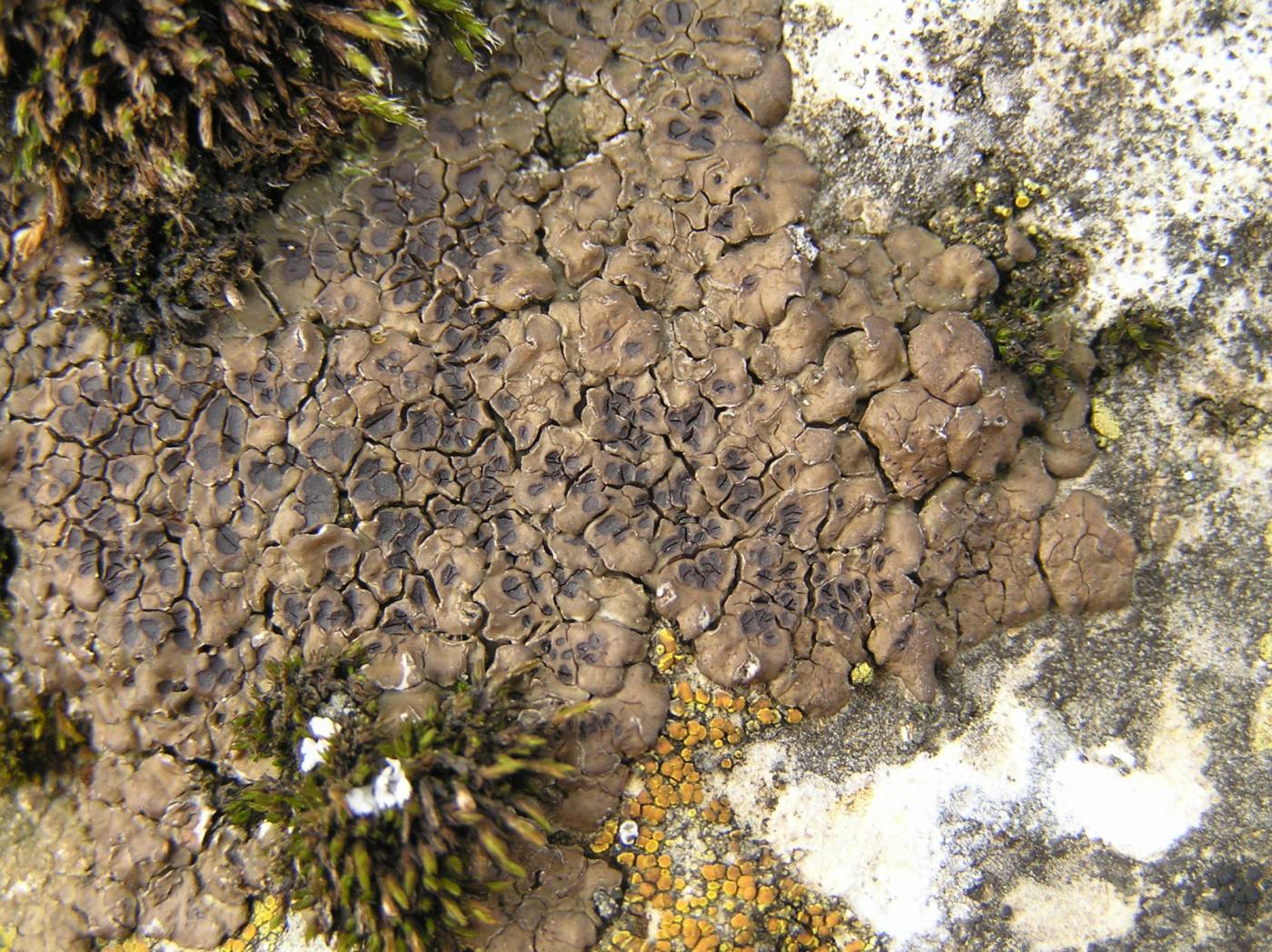Acarospora macrocarpa has a thallus of brown to dark brown areoles up to 2 mm wide with often solitary dark apothecia up to 1 mm wide. The areoles can become squamulose with a distinct stipe. The hymenium is high (100–)120–150 μm high, sometimes higher. The hymenial gel is dark blue (euamyloid) in Lugol’s. The ascospores are 8–12 × 4–5 μm and less than 100 per ascus. The species grows in full sun on limestones and conglomerate rock in the Czech Republic at elevations usually below 500 m. It often occurs on vertical or steeply inclined faces of natural outcrops. Acarospora macrospora is locally abundant in karst regions. It is common in Europe and Asia (Siberia).
Acarospora oligospora differs from A. macrocarpa in growing on siliceous rocks, acid or basic, often on small stones, and usually having a lower hymenium. Acarospora murorum has a usually yellowish-brown thallus and sometimes A. macrospora can have a lighter brown thallus but A. murorum does not occur in the Czech Republic. It is especially common in the Mediterranean lichen flora. Trimmatothelopsis sphaerosperma (syn. A. sphaerosperma*) also occurs on calcareous and base-rocks like A. macrospora but has globose ascospores mostly 7–10 μm wide and white areoles (Knudsen et al., unpublished).
taxonomic classification:Ascomycota → Lecanoromycetes → Acarosporales → Acarosporaceae → Acarospora
Red List (Liška & Palice 2010):NT – near threatened
Red List (Malíček 2023):C3 – endangered
Occurrence in the Czech Republic
All records: 62, confirmed 38. One click on a selected square displays particular record(s), including their source(s).
